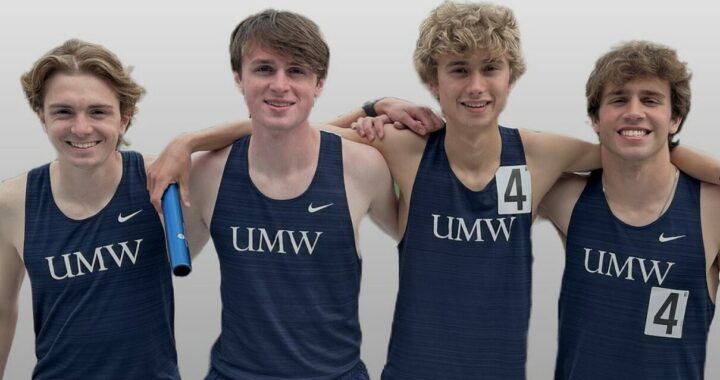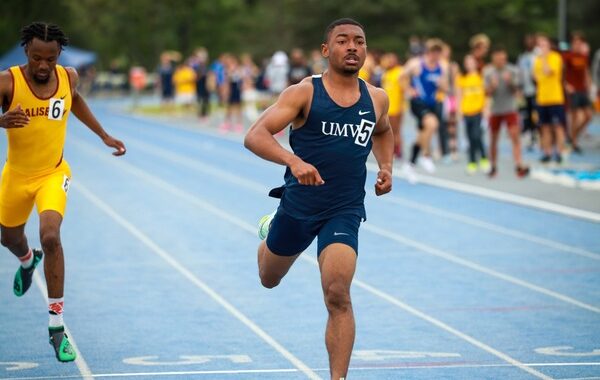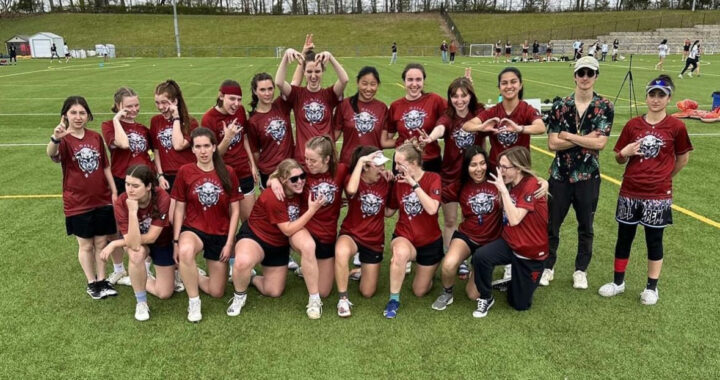Dissecting the Super Bowl
9 min readThis is it. The culmination of the NFL season happens this Sunday as the Indianapolis Colts face off against the New Orleans Saints in Miami, Fla. The winners will gain the title of Super Bowl champions while the losers will simply wonder what could have been. Let’s take a look at the keys to the matchup and see if we can’t get a glimpse at who will be hoisting the Lombardi trophy come Sunday night.
QB: Both of the signal callers in this game are truly phenomenal. The Saints’ Drew Brees set the NFL record this year for completion percentage in a season (70.6 percent), and last year he came close to breaking the single season record for passing yards (he ended up with 5,069). Brees finished this season with a league leading passer rating of 109.6 and he threw for 34 touchdowns in route to leading New Orleans to their first ever Super Bowl.
But while Brees is a fine quarterback having a great year, the edge here has to go to the Colts’ Peyton Manning. Manning won his fourth MVP award this season and, though he finished with fewer touchdown passes, more interceptions and a worse QB rating, Manning’s postseason experience gives him a decided advantage. Manning returns to the site where he won his first championship against the Chicago Bears just three years ago, and being battle tested in the playoffs cannot be overlooked.
And if you are unsure about which of these outstanding quarterbacks is better, ask yourself this: If there are two minutes left in a tie game and you have the ball, which QB do you want under center for that drive? Give me Manning every time.
RB: Neither of these teams play smash-mouth football as they are both much more pass oriented. Having said that, many people would probably be surprised to learn that the Saints actually rank sixth in the NFL in rushing yards per game with over a 131-yard average. The Colts are what people expect, as they rank last in the NFL in rushing yards per game with an 80.9 average. New Orleans uses a combination of Pierre Thomas and Reggie Bush in the backfield while Indianapolis counters with a duo of their own in Joseph Addai and Donald Brown.
While Addai rushed for the most yards of the group, he averaged just 3.8 YPC while both Thomas and Bush had YPC averages over the 5.3 mark. It’s also worth noting that Brown has been almost a non-factor all season, and Bush has been incredibly inconsistent. However, Bush has a big-play ability that cannot be denied. Be it on a simple toss, a screen pass or a punt return, Bush can take it to the house for six.
The Indy running game is merely there to keep defenses honest and to set up the passing game, but the Saints can run it down a defense’s throat should they try and sit back in pass coverage.
The consistency of Thomas and the big play capability of Bush gives New Orleans a big edge.
WR/TE: The Colts have so many weapons in the passing game that they constantly leave defenses dumbfounded on who they need to stop. WR Reggie Wayne has been every bit as consistent as his quarterback has over the years. Wayne posted another 1,200 yard season and added 10 TD receptions, and, though he isn’t the biggest or the fastest, he is one of the top receivers in the NFL.
Another crucial piece of the Indianapolis passing game is TE Dallas Clark. Clark always has to be accounted for as he too racked up over 1,100 receiving yards with 10 TDs. The skill set of the talented TE, along with the way that the Colts constantly move him in their offense, makes Clark a matchup nightmare for defensive coordinators.
But those same coordinators better not forget about WR Austin Collie and especially WR Pierre Garcon (who is coming off a torrid AFC Championship game). Collie is a Wes Welker type guy who runs short patterns and catches everything. On the other hand, Garcon is a guy who will run a lot of slant patterns and later try to get a defensive back to bite as he runs a double move by them.
On the Saints’ side of the ball, the No. 1 priority has to be stopping WR Marques Colston. Now Brees loves to spread the ball around, but the 6’4 receiver out of Hofstra is his go-to guy and posted his third 1,000 yard season in four years in ’09-’10. The other key guy to watch for is WR Robert Meacham. The third year receiver out of Tennessee led the league in receiving average (16.0) and was tied for the lead in TD catches (nine). He is a deep threat who kills defenses with seam-patterns but is also a great red-zone target because of his size (6’2) and leaping ability.
Outside of those two, no one really has stand out numbers because of Brees’ aforementioned love of spreading the ball around. This can make it even harder for defenses because they can’t key in on certain players and completely disregard others. Seven different Saints caught at least 35 passes this year, and 10 different Saints caught a TD pass.
However, a couple more guys to watch would be WR Devery Henderson and TE Jeremy Shockey. It’s tough to say how much success Shockey will have on Sunday as he is battling a foot injury, but he is key in the short passing game and keeping those safeties from drifting back deep to guard the long ball. Meanwhile, Henderson is a deep threat who appears to run a fly pattern almost every time down the field. If a corner forgets about him or is a step slow in reading his route, Henderson could burn Indy on a deep bomb.
Both teams have numerous weapons that must be contended with, but in the end, I trust Wayne and Clark over anyone that New Orleans has. It’s not as big a gap as some would think, but the edge goes to the Colts.
O-line: Both lines do a great job of protecting the quarterback. New Orleans offensive line only allowed Brees to get sacked 20 times this season, the seventh fewest allowed in the league. Despite how good a job the Saints did protecting their QB, the Indianapolis offensive line was even better, giving up only 10 sacks on the season. Now a lot of that has to do with Manning’s impeccable ability to read the defense, diagnose what they are doing quickly, and getting rid of the ball, but the line still gives him adequate time.
Now the Indy running game, or lack thereof, was touched on in the RB section, and, while it is fair to give a lot of the blame to the running backs themselves, some of the responsibility lies with the offensive lineman to open up gaps for the backs to run through. New Orleans does a much better job here, and that makes the offensive line debate a wash, as both teams are evenly solid up front.
D-line: The saying that “defense wins championships” is cliché but it has been proven true through the years, and most of the time it starts with the guys up front. The big question mark here is with Colts star DE Dwight Freeney, who suffered a torn ligament in his right ankle in Indianapolis’ victory over the Jets in the AFC Championship game. Freeney is quoted as saying that his status for the Super Bowl is up in the air, and if he can’t play, it would be a huge loss for Indy. If Freeney and his 13.5 sack total can’t go on Sunday, more pressure will be put on the Colts other great DE Robert Mathis. Mathis tallied 9.5 sacks this season, but he will surely be double-teamed throughout the game if Freeney’s services are unavailable.
New Orleans’ front four is led by DE Will Smith, who led his team in the regular season with 13 sacks. DT Cedric Ellis clogs the running lanes in the middle and is vital to occupying offensive lineman to allow success for the many blitzing linebackers and safeties that defensive coordinator Gregg Williams likes to send.
The edge up front would go to Indianapolis if Freeney were healthy, but even if he plays it is clear that he won’t be his usual self and that means that the edge here swings to the team from the Big Easy.
Linebackers: LB Jonathan Vilma is the tackling machine that leads the New Orleans set of linebackers. Vilma wreaked havoc all season as he registered a team leading 110 tackles and also added three INTs and two sacks. The rest of the Saints linebacking corps is rather forgettable, but Vilma is a stud.
While New Orleans may have one tackling machine, the Colts have the luxury of two such players on their team. LB Clint Sessions had a team high 103 tackles this year and was closely followed by fellow LB Gary Brackett who had 99 tackles by his name.
They always say that two is better one, and that’s why the Indy gets the edge here.
Secondary: Ball-hawking FS Darren Sharper headlines a solid secondary for New Orleans. Sharper led the team with 15 passes defended, nine INTs and three defensive TDs. Meanwhile CB Jabari Greer is the team’s top cover man, and, though he only started eight games due to injury, he still had 13 passes defended and two INTs. The problem for the Saints is that outside of these two guys, they have had trouble with consistent play by their defensive backs. They need second year CB Tracy Porter and rookie CB Malcom Jenkins to step up and have big games on Sunday to slow the Colts receivers down, or it could be a long day.
The Colts secondary is usually led by SS Bob Sanders, but Sanders has missed just about the entire season due to a knee injury. In Sanders absence, FS Antoine Bethea stepped up and took control. Bethea’s 95 tackles ranked third on the team and his leadership with a young secondary was crucial to their success. CB’s Tim Jennings and Jerraud Powers are the top cover men for Indianapolis, and, though you probably haven’t heard of them, they have done a sound job all season.
Neither secondary is phenomenal and neither team possesses a shutdown sort of corner who the opposing QB must avoid at all costs. Both defenses allow the ball to be moved through the air, but the Colts were mediocre (14th in pass yards allowed) while the Saints struggled (26th versus the pass). New Orleans gambles in the secondary to make plays, while Indy is more fundamentally sound in that area, and I trust the latter.
Special teams: The edge in the kicking game favors the Colts. Indianapolis K Matt Stover will be the oldest player to ever compete in a Super Bowl, but he is still accurate and reliable. The Saints will be going with K Garrett Hartley and while the young kicker only missed a couple of field goal attempts on the year, I prefer the seasoned veteran Stover.
In the battle for field position, the punting game becomes crucial, and that too favors Indianapolis as their P Pat McAfee averaged 44.3 yards per punt to the 43.6 average of New Orleans’ P Thomas Morstead.
In both the punt and kick return phases of the game, the edge lies with the Saints. New Orleans’ kick returner Courtney Roby ranked fifth in kick return average (27.5) for those with at least 20 returns. Punt returner Reggie Bush’s numbers left something to be desired this past season, but he has a career 8.1 average and, if you include the playoffs, Bush has returned 5 punts for touchdowns in his career.
Coaching: This one is probably the toughest to calculate. The Colts have a first year head coach in Jim Caldwell, yet he led them to a 14-0 start, and they have still yet to lose a game in which they kept their starters in for the entirety of the game. They also have longtime offensive coordinator Tom Moore still in tow, and of course Peyton Manning does so much he practically counts as a coach too.
On the other hand, New Orleans has the offensive genius of head coach Sean Payton and a respected defensive coordinator in Gregg Williams. But I must say that Williams’ comments about trying to blitz Manning make me concerned if I’m a Saints fan. The Jets tried that same philosophy of blitz Manning and try to disrupt him, and the future Hall of Famer carved up the No. 1 defense in the league for 377 yards and three TDs. Despite that, I don’t see a decided advantage here so we’ll call it even.
Final Ruling: Most things seem to balance out in one way or another, but the defensive edge clearly favors the Colts, and Indianapolis also has experience on their side. The Freeney factor could swing things, but I’ll still put my money on Peyton Manning to pull it out. 31-24, Colts win, with Manning capturing the Super Bowl MVP.











